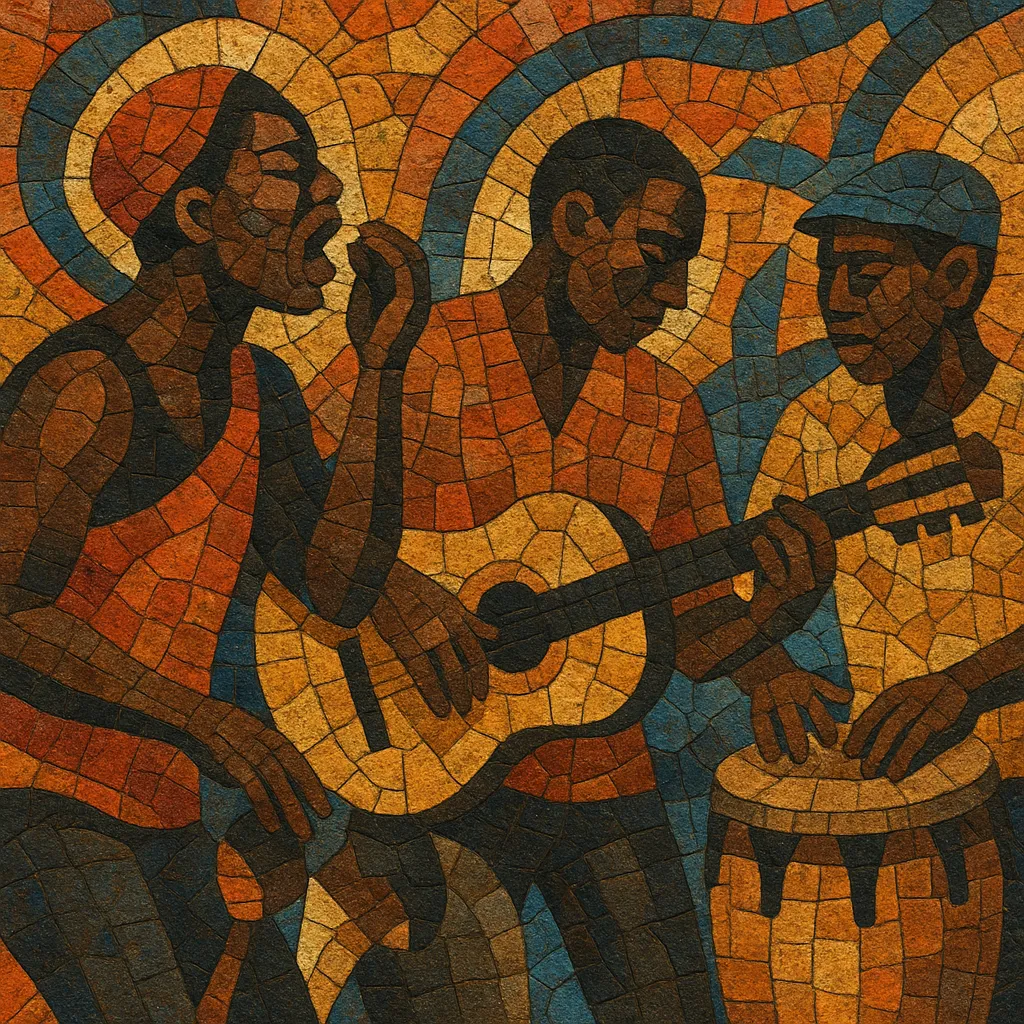Semba is a lively, guitar‑driven dance music from Angola characterized by buoyant 4/4 grooves, call‑and‑response vocals, and witty, narrative lyrics. Its name relates to a playful, belly‑to‑belly dance move that symbolizes the music’s social, communal spirit.
Emerging in Luanda’s musseques (working‑class neighborhoods), semba blends Angolan traditional rhythms with Afro‑Atlantic currents—especially Cuban son and Congolese rumba—absorbed via radio, records, and port exchanges. Typical ensembles feature interlocking guitars, bass with anticipatory syncopations, hand percussion (dikanza/reco‑reco, congas, shakers), and often drum kit, supporting melodies that are both joyous and gently sentimental.
Semba is foundational for modern Angolan popular music: it seeded kizomba’s smoother, slower pulse and helped shape kuduro’s urban energy, while remaining a beloved social dance and a vehicle for storytelling about everyday life, love, humor, and social critique.
Semba crystallized in 1950s Luanda, where musicians in musseques adapted older Angolan dance forms and rhythms into urban, guitar‑centric songs. Port exchanges and radio brought Cuban son and Congolese rumba, whose cyclic guitar patterns and clave‑related phrasing blended naturally with local grooves.
Bands and vocalists such as Ngola Ritmos, Artur Nunes, David Zé, and Bonga popularized semba in ballrooms and on radio. Lyrics mixed romance, humor, and everyday tales with subtle (and sometimes overt) social commentary during late‑colonial and early post‑independence periods, turning semba into both dance music and a cultural voice.
Improved recording and touring expanded semba’s audience. Electric bass, drum kit, and studio production refined its sound. Parallel currents—zouk from the French Antilles and Congolese soukous—interacted with semba, while younger Angolan artists evolved a slower, smoother derivative: kizomba. Semba remained central in dances, weddings, and community celebrations.
Semba continues as a core Angolan genre and a staple of social dance events worldwide. It directly influenced kizomba and informed the rhythmic DNA of kuduro. Contemporary artists maintain classic forms while updating harmony and production, ensuring semba’s continuity as both heritage and living popular music.


